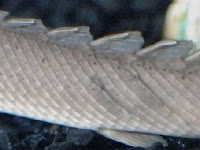
Is global warming a hoax or a scientific conspiracy? 1 out of 6 Americans said yes, it's a hoax or conspiracy, according to a
recent survey.
Climategate, the leaked emails from climate scientists, has fueled this doubt of global warming science.
Well, in response, something remarkable is happening. Scientists are beginning to open up the books on their work. According to the New York TImes:
A number of institutions are beginning efforts to improve the quality of their science and to make their work more transparent.
This is surprising stuff, scientists are notoriously reluctant to let the unwashed public into the inner workings of the scientific enterprise.
Is this the beginning of a change that will reverberate throughout the world of research, like the pioneering success of
AIDS activists who won a seat at the table for decision-making on AIDS research?Or is it merely a defensive move designed to quiet the furor over hacked emails that reveal the human side of scientists? I know many scientists who say nothing is wrong, that the only reason people doubt the science is because of evil doubt-mongers blocking progress. But I think it goes deeper than that. Scientists (and I am one, so I can say this) need to come down off our high horses and do a better job of dealing with the public. Don't get me wrong, I think climate change is real, it's proven, it's a threat, and we should act now to reduce harm.
If this is really an opening of the books on climate science, I think it will help build public acceptance of climate science and the fact of human-caused climate change.
 Fishing helps save rain forests. Did you know that? Ray Hilborn knows, and he thinks you should pay attention.
Fishing helps save rain forests. Did you know that? Ray Hilborn knows, and he thinks you should pay attention. 










